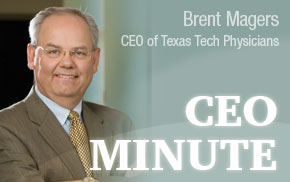 A few years ago I made a trip to The Methodist Hospital in Houston to look at its
tissue-typing lab for a transplant service we were adding to the hospital where I
worked. The CEO of Methodist Hospital at the time, Larry Mathis, told me that his
hospital "considered the world its catchment area" and told me several stories about
wealthy people from South America and the Middle East coming to his facility for care.
I was impressed.
A few years ago I made a trip to The Methodist Hospital in Houston to look at its
tissue-typing lab for a transplant service we were adding to the hospital where I
worked. The CEO of Methodist Hospital at the time, Larry Mathis, told me that his
hospital "considered the world its catchment area" and told me several stories about
wealthy people from South America and the Middle East coming to his facility for care.
I was impressed.Wealthy people still come to the United States from all over the world to have their health concerns addressed. But, it is not limited to the wealthy. People with limited resources from other countries come here also for health care. These folks are often sponsored by groups or individuals interested in helping them. Working with the UMC Foundation, Texas Tech Physicians faculty members recently performed a 12-hour surgery (that turned out very well) on a young Vietnamese boy to remove a tumor near his eye. It was a wonderful experience and one that I got to be involved with on the periphery.
International patients come to the United States because we have well- educated physicians and other professionals, state-of-the-art hospitals with the latest technology, and cutting-edge research (largely financed by the National Institutes of Health) at places including Texas Tech University. “Big Pharma” or the American pharmaceutical industry, criticized by many, continuously brings forth lifesaving and disease altering medications. And finally, the makers of diagnostic tests like CT scans and hand-held ultrasounds continue to amaze. Thanks to Dr. Jongyeol Kim’s leadership and drive, our medical students are getting the latest training on the use of hand-held ultrasound devices.
But, we also have a very costly system. It was designed to deal with acute medical problems. And, that is fine, except most of today’s problems are more chronic in nature and include such things as diabetes with complications, cancer, heart failure and neurologic illnesses like stroke. These chronic illnesses are rapidly increasing in frequency. Treating chronic diseases takes about two-thirds of all dollars spent on health care in this country. Perhaps there are better ways to treat chronic diseases than our present model and, of course, prevention also should be practiced.
So, it is the best of times and the worst of times for American medicine — on one hand, we are the envy of the world with our physicians, other professionals, drugs, diagnostics devices and so forth. But, paying for care, accessing care and treating illness in a way that is both effective and economical — well, that is the challenge.
